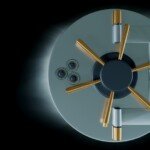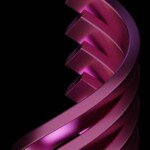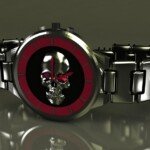Revealing Magic: Basics of CNC Processing
Ever wondered how precise the complex metal parts in automotive engines, smartphones and even aerospace components are? The answer is usually CNC processing, which is the cornerstone of modern manufacturing. If it’s similar "Five axis" or "G code" It sounds mysterious, and this guide will uncover the basic concepts, processes and great potential of CNC machining. Understanding these basics is crucial, whether you are starting to source parts engineering or just being fascinated by how things are made.
What exactly is CNC processing?
CNC stands for Computer numerical control. Essentially, this is a subtraction manufacturing process. This means that the material (such as metal or plastic) is systematically removed from the solid block ( "Workpieces") Create the final section with precisely controlled cutting tools. this "Computer numerical control" Part of it is the reason for improving it: instead of manually operating the lever, computer programs determine the exact movement, speed and movement of the cutting tool with excellent accuracy and repeatability.
Think of it as a highly sophisticated robot sculptor, meticulously sculpting materials based on complex digital blueprints. This blueprint is usually a CAD (Computer Aided Design) model that is converted into CAM (Computer Aided Manufacturing) software that generates a specific description (G-code) CNC machine.
How does a CNC machine work? Basic process flow
The magic happens in a coordinated order:
- Design and Programming (CAD/CAM): The journey begins digitally. Engineers use CAD software to create detailed 3D models. The model is then imported into the CAM software. Here, the programmer defines:
- Select cutting tools (drill, end mill, etc.).
- The cutting path (tool path) that the tool will take.
- Cutting speed, feed speed and cutting depth.
- Need to be fixed (how the workpiece is organized).
CAM software converts all this data into G codea low-level programming language understood by machine controllers. The postprocessor specifically tailors the G-code for the target CNC computer.
- set up: The mechanic selects the appropriate raw material (blank/workpiece) and then mounts it firmly on the workbench of the machine or in the fixture. The necessary cutting tools are loaded into the machine’s automatic tool changer (ATC).
- calibration: For accuracy, the machine is calibrated. This involves the exact position of the reference workpiece relative to the machine coordinate system (usually using a probe) and setting the tool length/diameter.
- implement: The operator loads the G-code program and starts the machining cycle. The CNC controller reads instructions line by line to accurately drive motors (servo or step) that move the cutting tool and/or workpiece multiple axes simultaneously. The material is removed layer by layer and passed through the chip chip.
- Post-processing (optional): After the main machining cycle, the part may require additional modification steps for aesthetics or functionality. This may involve bead blasting, polishing, anodizing, electroplating, painting, heat treatment or assembly – usually provided as a value-added service by manufacturers such as Greatlight.
- examine: The final parts are carefully measured using precise instruments (calipers, microns, CMMS-coordinate measuring machines) to ensure they comply with all specified dimensions and tolerances defined in the design.
Explore the landscape of CNC machines: 3-axis and 5-axis charges
Not all CNC machines are created equally. The number of axes determines the freedom and complexity of the movements they can create:
- 3-axis CNC machining: The most common type. The cutting tool moves linearly along three main axes: X (left and right), Y (front and back), and Z (up to down). Despite the many prismatic parts (think engine blocks, brackets), complex geometry, or the functionality of parts that require machining in multiple aspects, it may require repositioning of the workpiece, thereby increasing time and potential alignment errors.
- 5-axis CNC machining: This is where flexibility and complexity are truly created. The tool moves on the same X, Y and Z axes, but the workpiece itself can also rotate on two additional rotation axes (typically A and B). This allows the tool to approach the part from almost any direction In a setting. The advantages are profound:
- Reduce settings: Complex parts are usually done in one fixture, minimizing processing errors.
- Enhanced accuracy: Fewer settings mean better overall part accuracy.
- Complex geometric shapes: The ability to create complex contours, curves, undercuts and organic shapes using only 3 axes (think impellers, turbine blades, complex medical implants).
- Top surface finish: Optimal tool orientation can improve surface quality.
- Faster processing speed: Complex parts are often used faster due to fewer settings and optimized cutting angles.
- exist GreatOur fleet Advanced five-axis CNC machining center It is the backbone of our capabilities that enable us to consistently deal with the most demanding precise metal parts.
Materials are important: What can CNC process?
Part of the versatility of CNC machining is its compatibility with a wide range of materials. Key categories include:
- Metal: Aluminum (popular for its excellent addability and strength-to-weight ratio), steel (various alloys – mild, stainless steel, tool steel), titanium (high strength, strength, biocompatibility, aerospace use), brass, copper, bronze, magnesium, magnesium, inconel, inconel, Inconel (high flow alloy).
- plastic: ABS, Nylon (polyamide), Polycarbonate, PEEK (High Performance Thermoplastic), Acrylic (PMMA), PTFE (Teflon), Delrin (POM), HDPE.
- Others: Composite materials, wood (for prototypes or fixtures), foam (for pattern).
The choice of material depends entirely on the function of the part – requiring strength, weight, corrosion resistance, thermal properties, conductivity, biocompatibility and cost. Gremight excels in handling "Most materials," Provide expert guides on material selection to best suit your performance needs and budget.
Where to accurately shape the world: CNC applications
CNC machining is everywhere in industries requiring high precision and reliability:
- aerospace: Structural components, engine parts, landing gear components.
- car: Engine block, transmission assembly, suspension parts, prototype.
- Medical: Surgical instruments, implants (joints, teeth), diagnostic equipment housing.
- electronic: Radiators, chassis, connectors, fixtures and fixtures.
- vitality: Turbine blades, valve bodies, drilling components.
- Robotics: Weapons, grip, structural frame.
- defense: Weapon components, communication systems, professional hardware.
- Industrial Machinery: Gears, shafts, molds, custom tools.
- consumer goods: Prototypes, functional parts of the equipment, high-end audio equipment.
Why meet your CNC machining needs?
In a competitive environment, Great Stand out as Prime Minister Professional five-axis CNC processing manufacturer. Our commitment is to solve your complex metal parts manufacturing challenges:
- Cutting-edge technology: We invest Advanced five-axis CNC machining equipment And constantly improve our Production technology Provides unparalleled precision and capability.
- In-depth process expertise: Our team has profound knowledge not only in operating the machine, but also in Professional solution Complex manufacturing problems, process of optimizing efficiency and quality.
- Comprehensive one-stop service: In addition to processing, we Provide one-stop post-processing and completion services – Heat treatment, various finishes, assembly – Simplify supply chain and ensure consistent quality from raw materials to finished products.
- Material mastery: Able to handle Most materialsWe provide expert guidance and Customized processing Customized to your specific material requirements.
- Market speed: We prioritize agility and understand the time limits, provide Quick customization and processing Function.
- Uncompromising accuracy: Custom precision machining is our core capability to always meet the most stressful tolerances required for critical applications.
- Competitive value: As you First choice For advanced machining, we provide top quality and service Best Priceensure the best value of your investment.
Ready to use the power of precision?
Customize your precision parts now at the best prices! Contact Greatlight today to discuss your project and experience the differences that advanced five-axis CNC machining and expertise can make.
Conclusion: Precision for designing for the future
CNC machining, especially advanced five-axis technology, is an indispensable and constantly evolving force in modern manufacturing. It has the ability to transform raw materials into complex, high-precision parts with efficiency and repeatability, thus setting standards for countless industries. Understanding the basics – from the role of G-code to the transformative power of multi-axis motion – empowers informed decisions about part design and production. Requiring demanding accuracy, speed and reliable partners for complex metal components, leveraging the expertise and capabilities of professional manufacturers like Greatlight (Greatlight) is key to unlocking innovative solutions and achieving success.
Frequently Asked Questions about CNC Processing (FAQ)
Q1: What is the main difference between CNC milling and CNC rotation?
A: CNC milling uses a rotary cutting tool to remove material from fixed workpieces. CNC rotating (on the lathe) rotates the workpiece with the fixed cutting tool. Milling produces complex 3D shapes, and turning is ideal for cylindrical parts (axis, bushings). Many stores (such as Greatlime) offer it "Milling" and "Turn around" Function.
Q2: How accurate is CNC processing?
Answer: The accuracy level varies according to machine capability, material, part size and processing process. Standard CNC machining typically maintains tolerances of approximately ±0.005 inches (±0.127 mm). High precision machining, especially with advanced 5-axis machines and meticulous process control (e.g. at Greatlight), can bring tolerances to ±0.0005 inches (±0.0127 mm) or more critical features.
Question 3: What is the biggest advantage of 5-axis CNC machining?
Answer: The main advantages are:
- Reduced setup (complex parts usually made in a fixture).
- Higher accuracy (refixed error accumulation is less).
- Ability to process complex geometry and undercuts.
- Improved finish (optimized tool angle).
- The machining time of complex parts is faster.
5-axis is good at 3-axis limitations become bottlenecks.
Q4: What file formats do I need to provide to provide CNC processing quotes?
A: The most commonly accepted file that generates CNC tool paths is the 3D CAD model step (.stp, .step) or Igs (.iges, .igs) format. Native CAD files (SolidWorks, Solidworks, Catia, Inventor) are acceptable, but the step/IGE is neutral and usually preferred. It is also crucial to provide 2D diagrams of size and tolerances in PDF or DWG/DXF formats.
Q5: Can CNC machines work with plastic and other non-metals?
Answer: Absolute. CNC machines are well-known among famous metals, but effectively cut a variety of plastics (ABS, nylon, Peek, acrylic), composites, and even wood or foam. The machining strategy (speed, feed, tool selection) was significantly adjusted according to material properties. Always clarify material requirements with your manufacturer.
Q6: How quickly can I get custom CNC machining parts?
A: Delivery time depends on part complexity, quantity, material availability and store capacity. Prototypes or small batch runs can usually be shipped within a few days. For high-volume production runs, lead times may be extended by several weeks. Rich experience in the manufacturer Quick customization and processinglike Greatlime, prioritizes fast turnaround while maintaining quality – always discuss your specific project schedule.
Q7: Are CNC machining parts expensive?
A: Cost varies according to material, part complexity, tolerances, finishes required and quantity. Setting up and programming are key initial costs. Although highly complex 5-axis parts or tightly resistant parts are more demanding than other methods such as additive manufacturing of metals, CNC machining is becoming increasingly cost-effective for small and medium batch production. Great Focus on providing Best Price Consistent with the required accuracy and service level. It is recommended to obtain multiple quotes with detailed specifications.

















